Prep: How To Prepare Foraged Flowers
Prep /prep/
(verb) Prepare. Make ready.
Discover how to prep flowers as we explore the art of transforming foraged blooms into stunning arrangements.
How to Prep Flowers Like a Pro
If you want to know how to prep flowers, we're here to equip you with the knowledge and skills needed to arrange foraged blooms like a seasoned pro. Let's begin by understanding the basics of preparing foraged flowers and the essential tools you'll need to prep your stems.
Keep it Clean
After cutting stems, store them in a cool place until you are ready to make your masterpiece. Cut stems are at their happiest when they are around 35 degrees Fahrenheit.
Before you even think about how to prepare flowers for a vase, let's talk about cleaning your tools. Proper floral tool hygiene is essential before you seek and prepare foraged flowers. Imagine it as a spa session for your trusty scissors or shears. Begin by giving them a bath in warm, soapy water to soak away dirt, residue and floral debris. Next, it's time for a germ-fighting treatment — a solution of one part bleach to nine parts water for a five-minute soak. This step acts like a reset button, ensuring your tools are germ-free. Give them a final rinse in clean water and allow them to air dry.
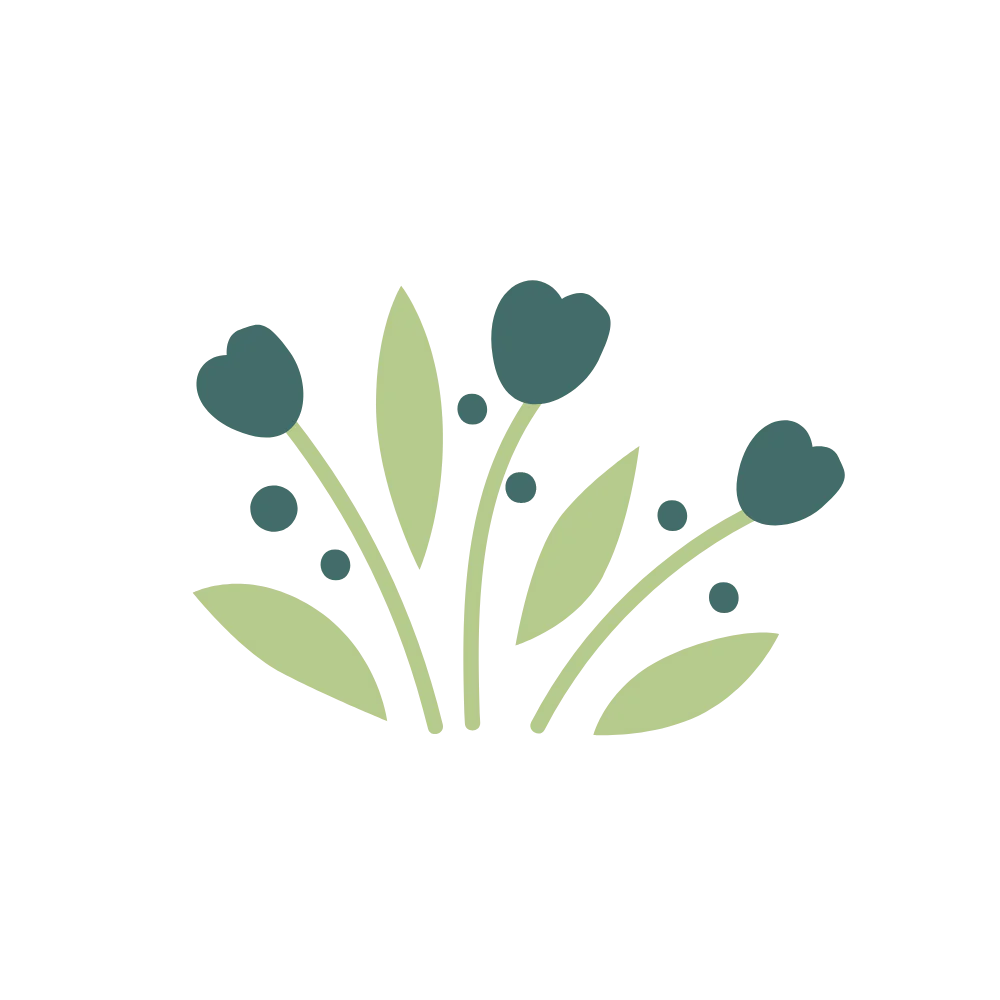
Must-Haves for Perfect Prep.
Tips on How To Prep Flowers for Foraged Arrangements and Help Them Flourish
Are you ready to learn how to prep flowers so they not only survive but thrive? Here are some valuable tips to give them the best possible start.
Preparing Foraged Flowers
Are you ready to take your floral arrangements to the next level? It's all about the details, from mastering cutting techniques to discovering the science of keeping stems cool. Let's step up your floral game with these essential tips and tricks.

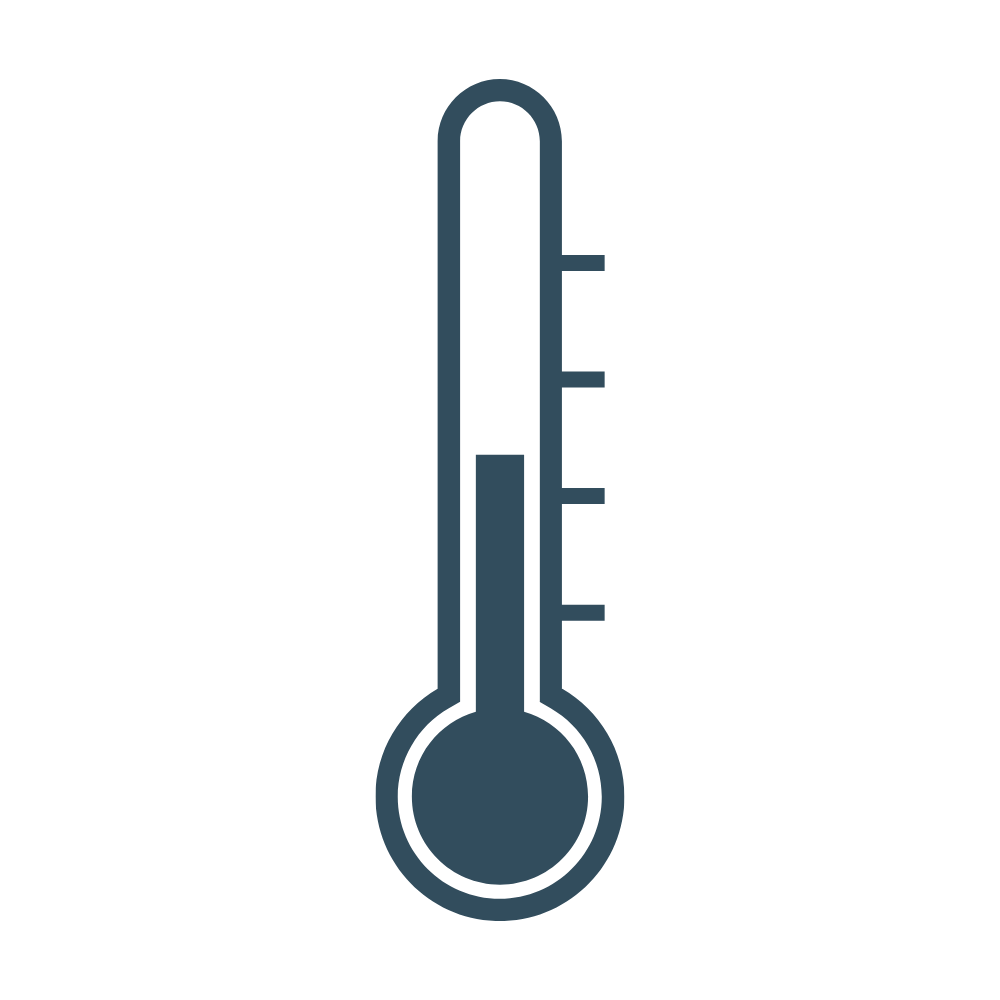
Prepare Foraged Flowers to Chill Out
After cutting stems, store them in a cool place until you are ready to make your masterpiece. Cut stems are at their happiest when they are around 35 degrees Fahrenheit.
Ever wondered why florists chill stems when preparing foraged flowers? It's not just a cool trick; it's a valuable technique that's part of how to prepare flowers for a vase that can significantly extend the lifespan of your blooms.
- The Chilling Effect: When you place flower stems in cold water, it slows down their metabolic rate. This means they age more slowly and stay fresher longer. Cut stems are at their happiest when they are around 35 degrees Fahrenheit
- The Hydration Factor: There's nothing like a cool refreshing drink - and your stems feel the same way. Chilling foraged blooms and greenery improves water uptake because cool water is absorbed more efficiently, keeping your flowers well-hydrated and looking their best.
Let's Eat: How To Prepare Flowers for a Vase With Food
It's time to boost your blooms! When you prepare foraged flowers, make sure to add some of our specially formulated fuel to nourish your flowers and make arrangements pop. Our Flower Fuel is packed with nutrients to keep your blossoms in peak condition. Dissolve the flower food in fresh, clean water, following the package instructions for the correct ratio. Place your stems in the solution and let them soak to absorb the nutrients.
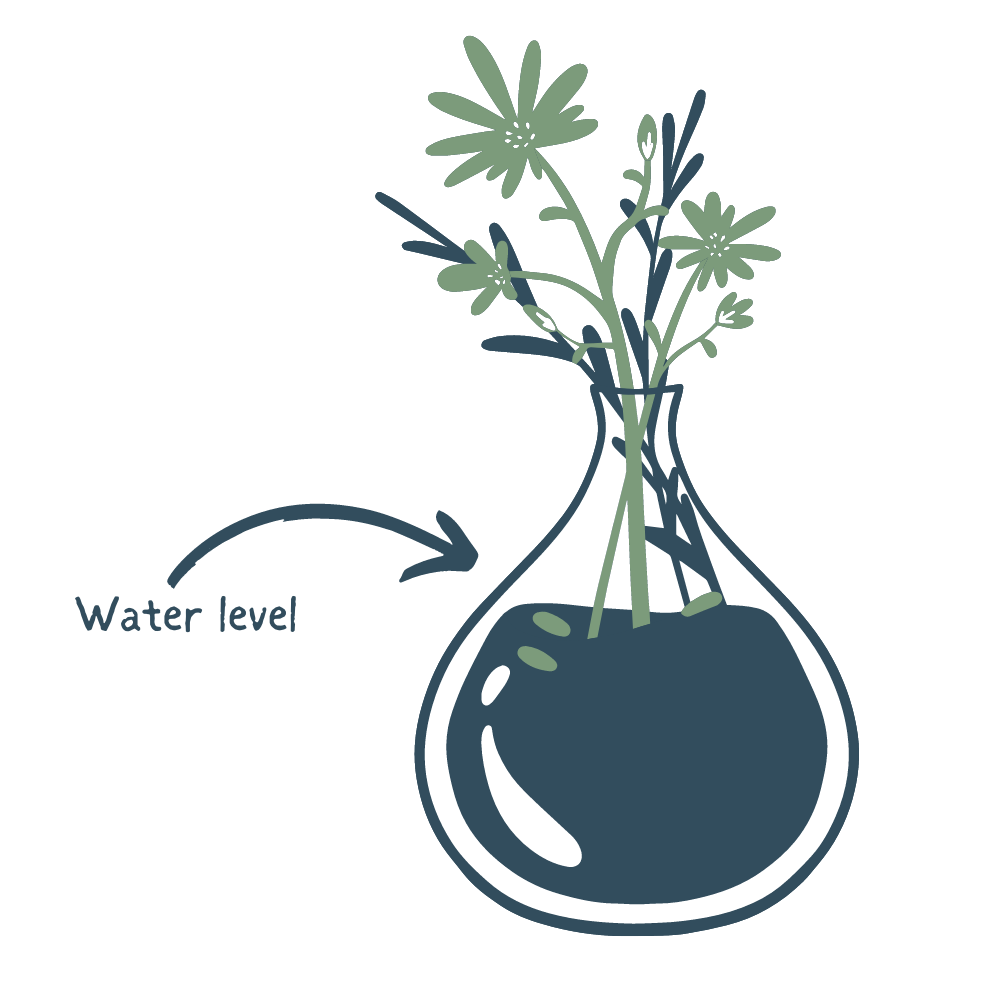
How To Prep Flowers Using Proper Cutting Techniques
Mastering the art of precision cutting is your secret weapon when learning how to prep flowers properly. Properly prepped stems can make all the difference in how your blooms fare in a vase. Here's how to prepare flowers for a vase:
- Select the Right Tools: Begin by choosing sharp floral shears or stem cutters. Well-maintained tools are essential when preparing foraged flowers because they create clean, precise cuts that promote efficient water absorption. Dull tools cause jagged cuts that hinder water uptake and lead to prematurely wilting flowers.
- Choose the Right Angle: And you thought you'd never use math in real life. One of the key tips in how to prepare flowers for a vase is proper cutting angles. Hold your stem at a 45-degree angle while cutting. This angle provides a larger surface area for water absorption to ensure their longevity.
- Measure the Length: As you are preparing foraged flowers, determine the desired length for your flowers in the vase, and make your cut just above a node or joint. This node allows water to travel up the stem more efficiently.
- Remove Excess Foliage: When arranging flowers with wet foam, trim the bottom 2 to 3 inches of thorns from the stem to prevent bacterial growth. Make sure that If you are using a vase, strip any excess leaves or foliage that would fall below the waterline. This prevents bacterial growth and keeps your water fresh.
- Submerge Immediately: When preparing foraged flowers, place your stems directly into a container filled with fresh, clean water as soon as they are cut. If the stem starts to close, it will prevent air from entering the stem, which can block water uptake.
Continue these steps for each stem. By following these tips on how to prepare flowers for a vase or other vessel, you'll help your stems stay fresh and vibrant.
Ready For Some Science?
Every flower needs a food source to help hydrate and keep bacteria low. And as cut stems age, they start to decay and can struggle to stay hydrated. That's where OASIS Forage Foods come in. Our scientifically formulated Forage Food helps keep stems fresh so you can enjoy them longer. The Foraged Fountain of Youth? We think so. Check out our other foraging products to prep your floral arrangement.

Food Source
(like sugar)
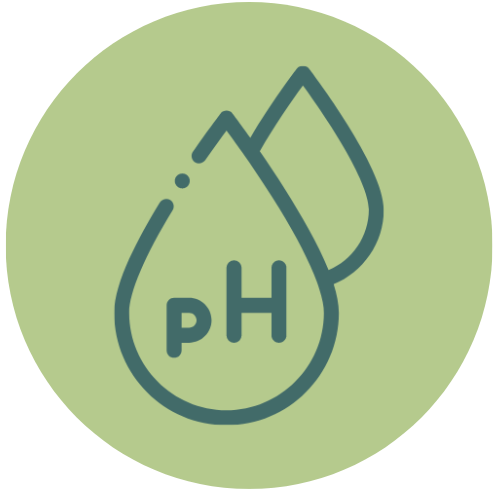
Ph balancing additives to help with hydration
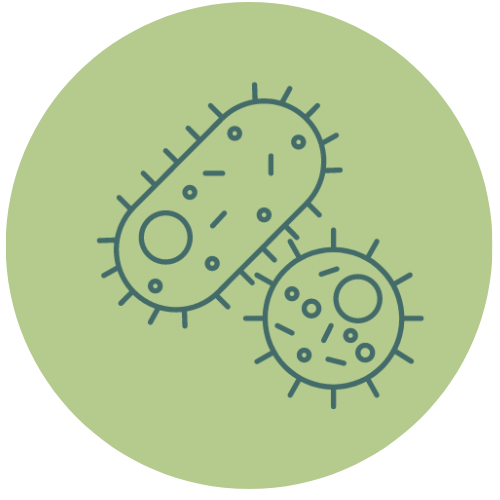
Bacteria Control
FAQs About How To Prepare Flowers for a Vase
What to learn more about how to prep flowers? We've got you covered! In this section, we'll tackle some common questions about getting your blooms ready for their spotlight.
What Are Common Mistakes to Avoid When Preparing Foraged Flowers?
When it comes to learning how to prep flowers, it's important to avoid some common mistakes.
- Don't use dull cutting tools.
- Don't rush through the cleaning process.
- Don't skip using floral food.
By sidestepping these issues, you'll be well on your way to mastering the art of how to prepare flowers for a vase, vessel or other container of your choice.
How Do You Cut Flowers?
When preparing flowers for a vase, precision matters. First of all, only use sharp stem cutters and other cutting tools. To extend the lifespan of your arrangements, cut at a perfect 45-degree angle. This angle makes it easier to insert stems into foam and enhances hydration. Always make sure you disinfect your tools before and after cutting flowers. Keeping tools clean will help keep bacteria low and foraged creations beautiful.
What Materials Are Needed for Prepping Foraged Flowers for an Arrangement?
Preparing foraged flowers requires the right tools and equipment. High-quality cutting tools ensure clean and precise cuts while forage floral foam and food extend your blooms' vase life. Floral wire and tape help secure stems as you create arrangements in vases or containers.
How Do I Prep Flowers So They Last Longer?
Proper preparation is key to extending the lifespan of your foraged floral creations. Before you prepare foraged flowers, be sure to select fresh blooms. Always remove dirt and insects before beginning to arrange the stems. Use precise cuts, wet foam and floral food for the best results.
Prepare Foraged Flowers Like a Pro with Oasis Forage Products
Congratulations on mastering the art of how to prep flowers! It's time to bring your floral visions to life with the help of Oasis Forage Products. Our high-quality floral tools, foam and food are designed to empower you to create foraged arrangements that stand the test of time. Now that you know how to prep flowers and other foraged finds, you're ready to Create - shop now for all of your foraging essentials.
Ready to keep going? Up next, create!
CREATEWant more tips on how to SEEK, PREP and CREATE?
Share your email to get more OASIS Forage tips and tricks.



